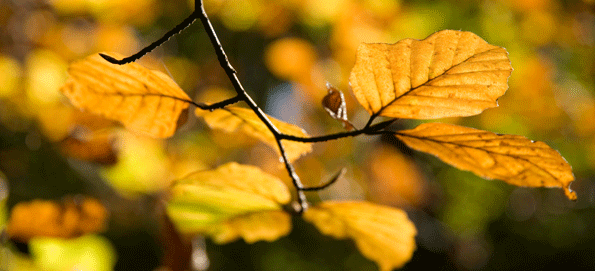
Wildlife in November
November brings with it the wonderful changing colours of autumn as the deciduous trees begin to lose their leaves.
In winter deciduous trees lose their leaves to save water. Before the leaves fall off, the green-coloured chemical inside is broken down. Other colours in the leaf that were hidden before can now be seen.
The oak waits until November to put on its best autumn show of colour, having only made a tentative start in October. Other tree species such as birch, ash and beech have already started turning colour with tinges of yellow and orange before eventually going brown.
Trees lose water through holes in their leaves all the time but they need water, along with air and light to make their own food. During the winter more water is lost from the flat leaves than can be sucked up by the roots so deciduous trees have adapted by losing their leaves in autumn to save water.
Hedgehogs that fatten up on slugs, snails and other minibeasts during the autumn spend the cold months of winter curled up in a cosy nest of fallen leaves and dry grass. When November starts with the fireworks and bonfires of the 5th the bonfires can be attractive refuges for hibernating hedgehogs, and therefore should always be checked before they are lit, especially if you have used fallen leaves.
Other things to look out for:
- This month is the start of one of winter’s highlights – namely the amassing of huge flocks of starlings. Although it is not known quite why this happens, perhaps for protection against predators or the cold, in the early evening at certain sites thousands get together. Whatever the reason this is an amazing spectacle to watch as they wield around the sky in dark masses and chatter and squawk. Eventually they seemingly fall to the roosts and all is once again quiet as they settle down.







